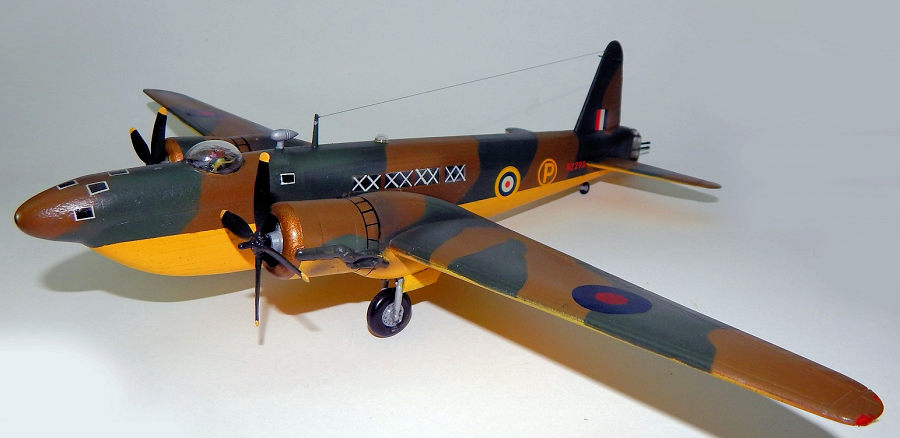
Matchbox 1/72 Wellington V
| KIT #: | PK-402 |
| PRICE: | $ |
| DECALS: | |
| REVIEWER: | Carmel J. Attard |
| NOTES: | Unicraft conversion set |

| HISTORY |
The prototype high altitude pressurized Wellington Mk V was powered by Hercules Mk XI engines complete with turbo super chargers and 4-bladed props. A fighter type single seat cockpit and a bubble type (offset to port) canopy complete the set. Two more crewmembers are housed in a pressurised cylinder down below to act as navigator and the other crew as recce cameras operator
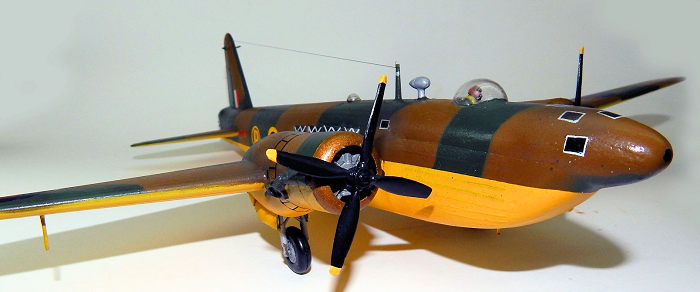 Wellington Mk VR3298 flew test flights up to
30,000 ft altitude, which proved sufficient to bring to light some unexpected
problems with outside temperatures of –40C. At that temperature and height the
flying controls and trimmer circuits became virtually unmovable. Special
hydraulic fluid had to be developed to permit operation of rear turret and the
bomb doors at that extreme temperature. Icing up of pilot’s dome canopy was a
problem and this was overcome by drying the air, the crew suffering considerable
discomfort.
Wellington Mk VR3298 flew test flights up to
30,000 ft altitude, which proved sufficient to bring to light some unexpected
problems with outside temperatures of –40C. At that temperature and height the
flying controls and trimmer circuits became virtually unmovable. Special
hydraulic fluid had to be developed to permit operation of rear turret and the
bomb doors at that extreme temperature. Icing up of pilot’s dome canopy was a
problem and this was overcome by drying the air, the crew suffering considerable
discomfort.
Then came Wellington VI attaining aprox 38,000 ft. and further trouble manifested themselves. This had a 12 foot extension to wing span and reached 40,000 ft with outside temperature being –67C. Sixty-seven high altitude Wellingtons VI were produced and in 1943, sixty of these were scrapped at a maintenance unit.
| THE KIT |
No information provided other than it's a Matchbox kit with a Unicraft conversion set.
| CONSTRUCTION |
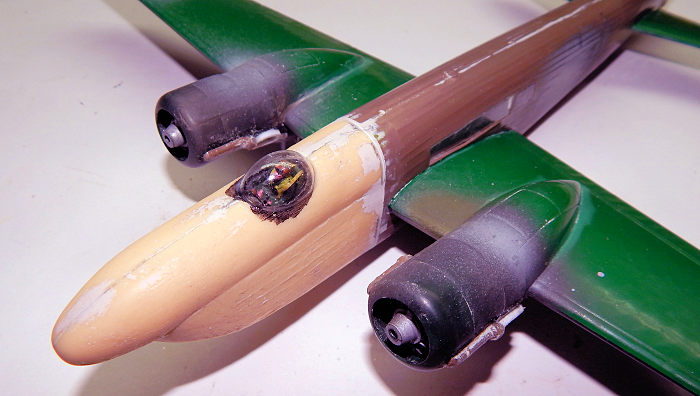 The kit modification involves a Matchbox
Wellington bomber kit with the forward part of fuselage removed which is
then replaced by a resin completely configured new nose adopted to house a
single seat fighter type dome canopy supplied by Unicraft from Ukraine.
Although differed from the bomber version no engines came with the resin set
and Hercules XI engines that replaced the kit engines (Matchbox kit engines
were smaller in diameter and length) came from a Sunderland radial engines
which fitted exactly the size required. The triangular shaped fuselage side
windows were blanked and longer ones cut further forward instead. The Mk V
retained the same wingspan and tail turret. Two sets of turbo super chargers
were scratch built and added to engine sides. These were of different shape
to the kit ones and built to conform to shape of ones shown on side view
drawing provided. The bulbous canopy was offset to port and an instrument
panel, control wheel and crew seat and figure was added. The fuel jettison
system and discharge pipes that were under wings were also removed for the
Mk V version.
The kit modification involves a Matchbox
Wellington bomber kit with the forward part of fuselage removed which is
then replaced by a resin completely configured new nose adopted to house a
single seat fighter type dome canopy supplied by Unicraft from Ukraine.
Although differed from the bomber version no engines came with the resin set
and Hercules XI engines that replaced the kit engines (Matchbox kit engines
were smaller in diameter and length) came from a Sunderland radial engines
which fitted exactly the size required. The triangular shaped fuselage side
windows were blanked and longer ones cut further forward instead. The Mk V
retained the same wingspan and tail turret. Two sets of turbo super chargers
were scratch built and added to engine sides. These were of different shape
to the kit ones and built to conform to shape of ones shown on side view
drawing provided. The bulbous canopy was offset to port and an instrument
panel, control wheel and crew seat and figure was added. The fuel jettison
system and discharge pipes that were under wings were also removed for the
Mk V version.
| COLORS & MARKINGS |
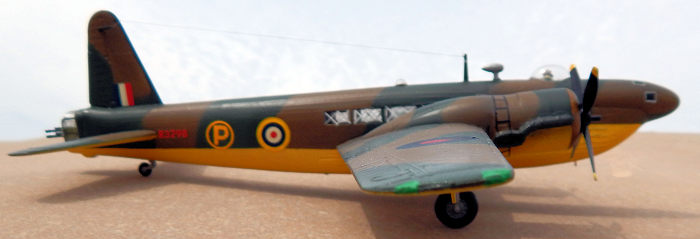 It was difficult to obtain photos of the type
and one could contend to make the prototype in dark earth and dark green
camouflage that had yellow undersides. All decals came from my spares. A number
of rectangular windows were added to top of nose at front of the pilot dome and
a further two added to sides at nose extension while two more windows added to
rear of fuselage close to wing positions. The geodetic structure that show
through the long fuselage windows were made from white decal strip sections. Two
round camera ports appear at nose front.
It was difficult to obtain photos of the type
and one could contend to make the prototype in dark earth and dark green
camouflage that had yellow undersides. All decals came from my spares. A number
of rectangular windows were added to top of nose at front of the pilot dome and
a further two added to sides at nose extension while two more windows added to
rear of fuselage close to wing positions. The geodetic structure that show
through the long fuselage windows were made from white decal strip sections. Two
round camera ports appear at nose front.
| CONCLUSIONS |
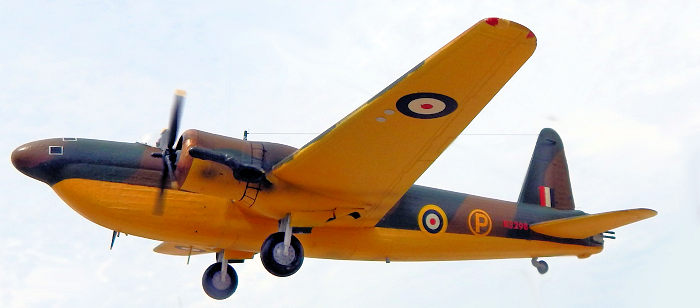 As it happens a favourite section are the
reconnaissance version of different types the Mk V fall in this category and
needless to say I was anxious to built this version of the Wellington. A rather
simple alteration and once the parts are available then it is within the ability
of the average modeler to build this kit conversion.
As it happens a favourite section are the
reconnaissance version of different types the Mk V fall in this category and
needless to say I was anxious to built this version of the Wellington. A rather
simple alteration and once the parts are available then it is within the ability
of the average modeler to build this kit conversion.
15 April 2019
Copyright ModelingMadness.com
If you would like your product reviewed fairly and fairly quickly, please contact the editor or see other details in the Note to Contributors.